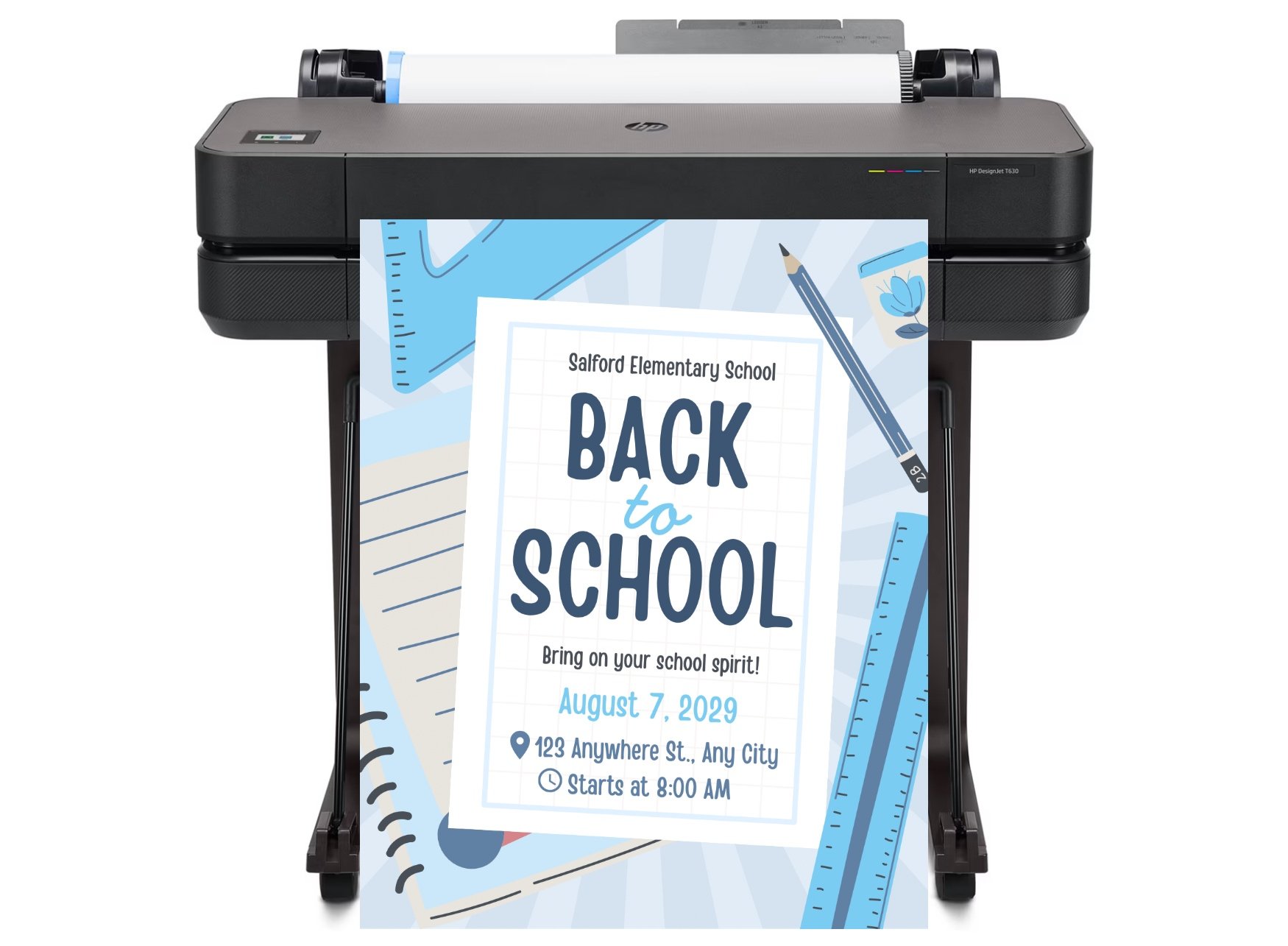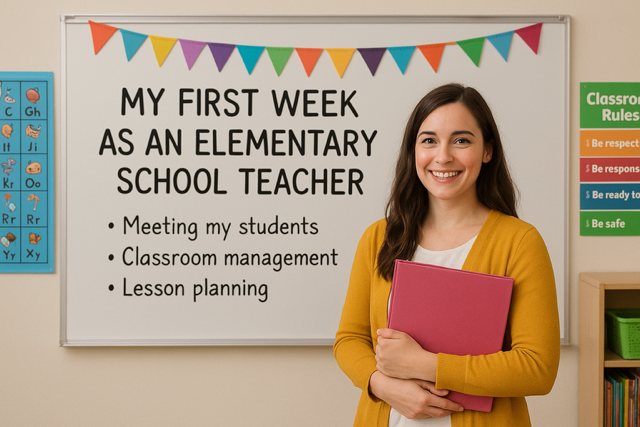
DISCOUNTED EDUCATION PRICING! CALL 1-877-891-8411. We Gladly Accept School Purchase Orders!

Hello, I’m Mandy, and I’m standing at the starting line of my teaching career, ready to welcome my very own group of elementary school students. After years of studying, student teaching, and imagining this moment, I’m finally here—a first-year teacher buzzing with excitement and a touch of nerves. Teaching is one of the most meaningful careers out there, shaping young minds and making a real difference. But I’ve heard it’s also one of the toughest, especially for new teachers like me. There’s a whirlwind of lesson plans, classroom management strategies and unexpected challenges to navigate. To keep my bearings, I’m focusing on three key ideas as I kick off this year: establishing strong routines with anchor charts, building genuine relationships with my students using beginning of the year books, and staying open to learning alongside them. Here’s how I’m diving into this incredible adventure.
Before my students step foot in the classroom, I’m mapping out routines to create a calm, organized environment. Routines are the backbone of effective classroom management strategies, helping kids know what to expect and freeing me up to focus on teaching. With so many routines to consider, it’s easy to feel overwhelmed, so I’m starting small and intentional. Two routines I’m prioritizing are an attention-getter to refocus the class and a system for lining up to keep transitions orderly, both supported by clear anchor charts.
For my attention-getter, I’m using a call-and-response that feels fun and natural. I’ll say, “If you can hear me, clap once,” and the kids clap once. Then, “If you can hear me, clap twice.” As the year goes on, I’ll switch it up with snapping, stomping, or pointing to the board to keep it fresh. I love that I can lower my voice—even to a whisper—to grab their attention without shouting. I’ll create an anchor chart with colorful visuals to remind students of the signals, ensuring it’s authentic to me, because if I’m not bought in, the kids won’t be either. The chart will hang near the front of the room, reinforcing this classroom management strategy.
Lining up is another routine I’m planning carefully. I’ve cleared a path from the door to the desks and decided exactly how I want the kids to enter and exit. When they come in, I’ll expect them to walk quietly to their seats with minimal chatter. For dismissal, I’ll use my attention-getter to hush the room, then remind them of expectations: put materials away, stay silent, and wait for their table to be called. I’m making an anchor chart with step-by-step visuals for this routine, possibly assigning line spots or using floor markers for clarity. To confirm they understand, I’ll ask for a quick thumbs-up before releasing tables one by one.
These routines need to be taught like any other subject. In the first week, I’ll model each step, have the kids practice, and check that they can do it independently—like passing a mini skills test. My anchor charts will serve as constant reminders of expectations. I know we’ll need to revisit and practice these routines throughout the year, especially if things start getting sloppy. It’s a time investment upfront, but I’m convinced it’ll pay off with a classroom that hums along, letting us spend more time on learning and less on chaos.
The start of the school year is a blur of new faces, schedules, and paperwork, but I’m carving out time to truly know my students. Data like test scores or notes from last year’s teacher are useful, but they don’t tell the whole story. I want to learn who my students are as people—their passions, quirks, and dreams. To do this, I’m planning short one-on-one or small-group chats early on, using beginning of the year books like The Name Jar or All Are Welcome to spark conversations about identity and community. I’ll ask a mix of questions, like “What’s your favorite thing to learn at school?” and “What do you love doing on weekends?” Maybe I’ll throw in, “If you could have any superpower, what would it be?” These simple questions, tied to themes from our books, are my way of opening the door to real connections. It’s a learning experience for me too!
Beyond these chats, I’m looking for everyday moments to bond. Greeting each student at the door every morning is a small ritual I’m excited to start—it sets a positive tone and shows them I’m happy they’re here. During recess, I might join in a game of tag or ask about their favorite playground activity. I’m also creating an anchor chart where students can add their answers to a fun question from one of our beginning of the year books, like “What makes you special?” These interactions aren’t just about being friendly; they’re about building trust. I’ve read that a strong relationship with a teacher can be a game-changer for a student’s success, and I want to be that supportive adult who helps them feel seen and valued.
I’m also planning a “get to know you” activity for the first week—a class poster where each student adds something about themselves, like a favorite hobby or a fun fact inspired by our book discussions. It’ll be a classroom visual reminder of who we are as a community, displayed alongside our anchor charts. By showing genuine interest in their lives and tying it to meaningful stories, I hope to create a classroom where every student feels they belong.
Even though I’m the one standing at the front of the room, I know I’m not done learning—far from it. I’m eager to soak up wisdom from experienced teachers around me. My grade-level team has already shared classroom management strategies, like using anchor charts to reinforce expectations or pacing lessons to keep kids engaged. I’m also connecting with my school’s mentor teacher, who’s been a lifeline for navigating the ins and outs of our curriculum and school culture. Every great teacher started where I am now, and I’m ready to learn from their successes and mistakes.
Teaching isn’t a solo act, and I’m grateful to be part of a team. Whether it’s brainstorming with colleagues during planning periods or observing a veteran teacher’s class, I’m committed to growing every day. I’m keeping a journal to reflect on what works and what doesn’t—because let’s be honest, there will be plenty of trial and error this year. I’m also exploring beginning of the year books recommended by colleagues, like First Day Jitters, to inspire my own teaching and connect with students. Being open to feedback and new ideas feels like the key to not just surviving but thriving in my first year.
As I stand on the edge of this new chapter, I’m holding tight to these three ideas: plan routines with anchor charts to create a calm classroom, build real relationships with my students through beginning of the year books, and never stop learning to refine my classroom management strategies. It’s a lot to take in, and I know there’ll be moments of doubt or chaos—spilled glue sticks, forgotten lesson plans, or a routine that flops. But I’m ready to embrace it all, mistakes included, because that’s how growth happens. Here’s to a year of laughter, learning, and building a classroom where every student feels ready to shine. Wish me luck!